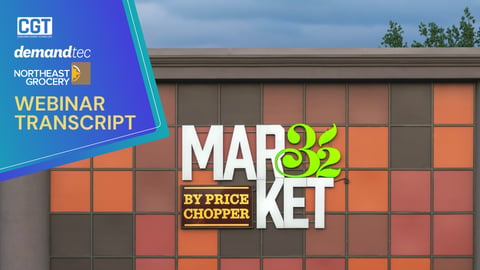Elevating Trade Promotion Management to Trade Promotion Optimization
As consumer goods brands prepare to navigate the imposing frontier of a post-COVID-19 marketplace, the opportunity to re-assess and update a brand’s traditional approaches to marketing has never been more critical, especially when it comes to trade promotion management (TPM).
Why specifically TPM?
Because every year, consumer goods brands allocate roughly 60% of their marketing spend on trade promotion and a whole 72% of these companies lose money on those efforts. Those aren’t great ROI odds. And we can only imagine how those percentages could further nosedive if brands apply traditional methods and technologies to a totally new retail reality.
The science of trade promotions, if we can call it that, has gotten so insidiously complex that simply throwing new tech and more data at it isn’t enough to improve outcomes. Rather, the wrench in the trade promotion machine appears to be the human capacity, in both speed and efficacy, to synthesize complex sets of information, at the speeds at which the marketplace is operating, and ultimately produce winning promotions.
See also: Rules to Establish an Effective Trade Promotion Management Practice
With the stakes so high, let’s take a look at the four major areas where most trade promotions tend to drop the ball:
- An over-reliance on outdated and manual tools, such as emails, accounting systems, and spreadsheets.
- The inability to respond quickly because of the complexity of the data and technology that is not responsive to the speed of business hindering trades decision-making process
- Too many barriers preventing the adoption of digitally advanced technologies.
- KPIs not rationalized to accurately assess performance of current and past trades to inform future trade promotion planning
- Lack of integration of historical data and predictive analytics leading to non-optimized rushed trade decisions that are not honed in marketplace realities
- A lack of coordination between various events and campaigns that might otherwise capitalize on promotion’s successes.
Coming out of the pandemic, brands will need to move beyond basic TPM software solutions that measure and analyze promotion success and adopt an advanced form of analytics that will provide keener and actionable insights — trade promotion optimization. Given the chaotic nature of the emerging market, this transformation will be requisite for any company hoping to stay competitive.
But where are the tools to bring this synthesis about?
Recent advances in artificial intelligence and machine learning have resulted in sophisticated platforms that can not only handle disparate data but can analyze it thoroughly, quickly and with a goal of building trade promotions that will perform much more robustly than those under TPM.
See also: Haugen-Gruppen Connects the Dots with New TPM Tool
By way of example, we recently helped a global CPG leader transform its trade promotion management. Like many in the consumer goods industry, this client faced significant challenges such as offline planning via spreadsheets and poor adoption of existing planning platforms. As a result, the client suffered from problems ranging from a slowdown in decision making to the proliferation of inaccurate data. The root cause for these issues: too many process handoffs and a complex technology landscape.
An AI-powered trade promotion optimization solution came to that client’s rescue and allowed easy access to promotion management, execution, optimization, forecasting, and tracking from a single web platform, among other benefits.
The reality is, these are the hurdles consumer goods companies will need to address as they begin to compete in the marketplace of the “new normal.”
Applying AI and machine learning algorithms to workflows for trade promotion can lead to forecast accuracy that reflect the reality of the new post-COVID-19 marketplace, pricing optimization that are informed by signals from the marketplace and consumer demand, and invoicing settlements for seamless retailer partnership management.
It also readily allows teams to help develop merchandising plans that help direct field sales teams to focus on the most valuable events, resulting in the reduction in support costs and focusing on store support level.
In the end, the real challenge to trade promotion management is systemic and requires a solution that drives systemic changes over the entire TPM process. Ultimately, a workable solution requires the effective synthesizing of smart data, intelligence, and, often overlooked yet equally critical, the end user experience. Future trade promotion success rides on achieving true trade promotion optimization through an AI-powered platform.
Ahmer Inam is the chief artificial intelligence officer at Pactera EDGE, a digital solution provider for the data-driven, intelligent enterprise. Ahmer has more than 20 years of experience driving organizational transformation.




